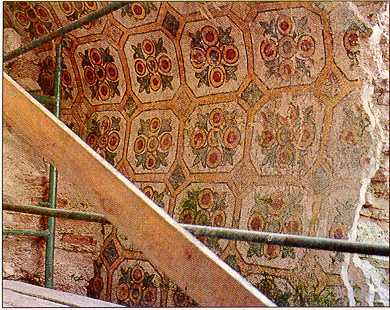 |
 |
Manos Tsikritsis, a mathematician from Crete in Greece, claims that he has managed to decipher Minoan Linear A. In his book that is going to be published soon, he is trying to prove that Linear A incorporate some of the phonetic characters of the very early Greek language (doric, aeolic, cypro-arcadian) and a small number of egyptian words.
His methodology of decipherment rests on a comparison between Linear A and Linea B symbols based on similarity and frequency of use in both scripts. As a result he changed 20 of the 96 widely accepted syllabic values of Linear A symbols. He thinks that the above mentioned scripts might share the same symbols with different syllabic values. For example, according to that methodology, the Linear A word 81-02 (according to standard transcription) which is usually transcribed as Ku-ro and therefore considered to have semitic origin, is now given as ho-so which is homeric. In the Linear A tablets ho-so is followed by a number and the whole linguistic structure appears to be correct since it expresses an amount.
With his methodology, Tsikritsis has managed to read in Greek more than half of the existing Linear A texts. Needless to say that a great number of amateurs and professionals have tried the last a hundred years to decipher Linear A with no real success. Tsikritsis might be leading us to the correct direction that the script might be the written form of a language including elements from languages, like Greek and Egyptian that were fully developed on their own later on.
 |
Small and big vases were brought to light between 1990 and 1994 from an ancient wreck off Iris in Argolis, Greece. Some of them were made on Cyprus, others on Crete, and still others on mainland Greece. Archaeologists can not tell the departure port or the destination of the ship because few fragments of the wooden boat have remained.
The vases have been brought to a small museum on the island of Spetses, Greece. The significance of the discovery is that this is the third wreck of this type and period found in East Mediterranean although the so called Uluburum wreck (off the southwest Turkish coast) is still the richest one in respect to items found.
 |
The marble lions that can be seen on the island of Delos, Greece, were moved in November 1998 to the local museum. Time, pollution, wind, and see water have caused deterioration of their surface to the point that small pieces of their surface have been totally disapperared. Most of the lions were put in their preset position in 1914 by the French Archaeological School of Athens which had conducted the excavations on the island of Delos since 1906. The lions themselves date to c. 600 BCE.
 |
Turkish archaeologist Alpai Pasinli and his assistants brought to light in Istanbul, Turkey, another part of the huge palace of the Byzantine emperors in Constantinople. It has been estimated that the palace covered an area of 5,000,000 square meters and was the main residence of the emperors from the 4th to the 12th century. It was a complex of buildings and gardens, now under houses and other monuments, like the Blue Mosque. British, Americans and Turkish archaeologists have worked on parts of the palace since 1935 but apart from a few mosaics and the newly discovered frescos, very few other parts have been brought to light.